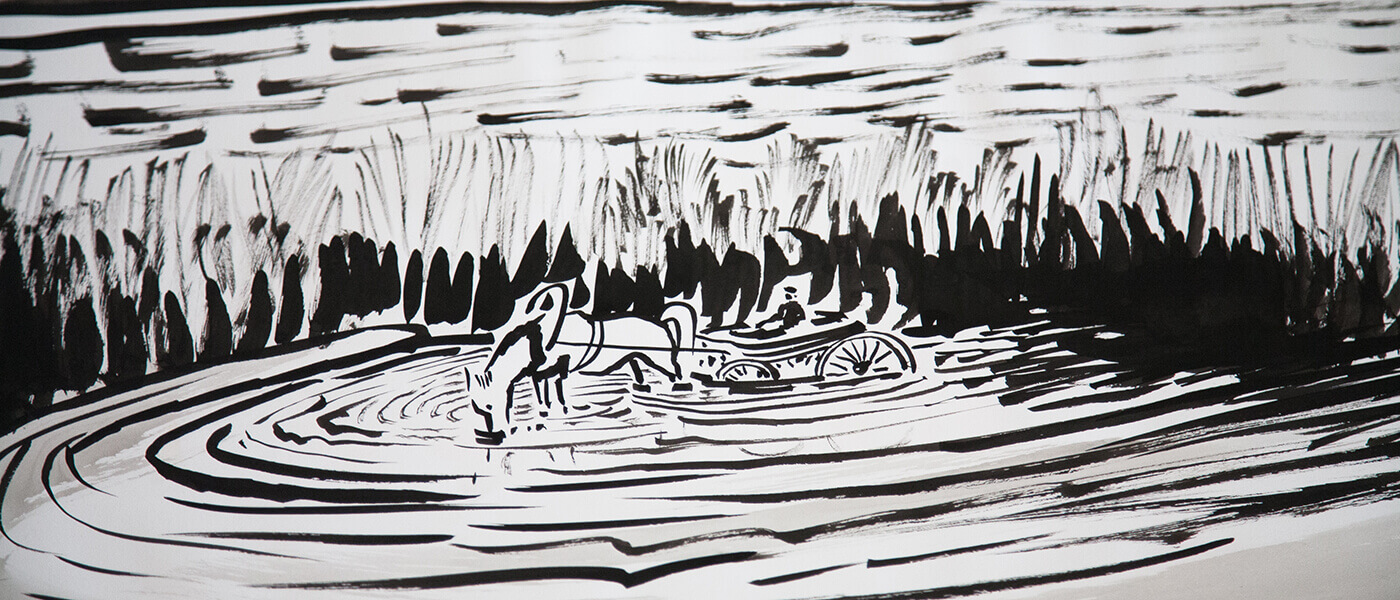Inspired by mathematical models, literary sources, and his own social consciousness, Robert Emmett Mueller was an artist, engineer, inventor, author, musician, puppet maker, and general wizard. In 2014, he donated 1,500 pieces of his life’s work to Monmouth University.
His creations include woodcuts such as the triptychs Ravages of Pre-emptive War, The Devil Stalks Baghdad, and America’s Bitter Presence. Many of Mueller’s pieces can be found worldwide and are featured at the Metropolitan Museum of Art, the Museum of Modern Art, the Pushkin Museum in Moscow, the New Jersey State Museum, the Rutgers University Museum, and the Victoria and Albert Museum of London. A painter, he described his style as “Mathematico-abstract.” He published the books The Science of Art in 1967, and Inventivity in 1963.
Mueller grew in St. Louis, Missouri, where his father was a baker and his mother was a seamstress and milliner. After serving in the Navy, he was sent to a college preparation program in Asbury Park, New Jersey, and later graduated from the Massachusetts Institute of Technology.
After moving to New York City to study philosophy at New York University, Mueller began to meet artists from the Roosevelt artists’ colony. In the 1950s, he moved to the colony with his wife and had two children, Rachel and Erik. There, he said he became “conscious of human inhumanity, moral and social problems, the depths of degradation, and the heights of elegance over which human nature ranges. He believed that artists should use their work to react to societal crises, encourage protest, and to fight for economic, political, and human well-being.
Mueller passed away in January 2017 at the age of 91.





